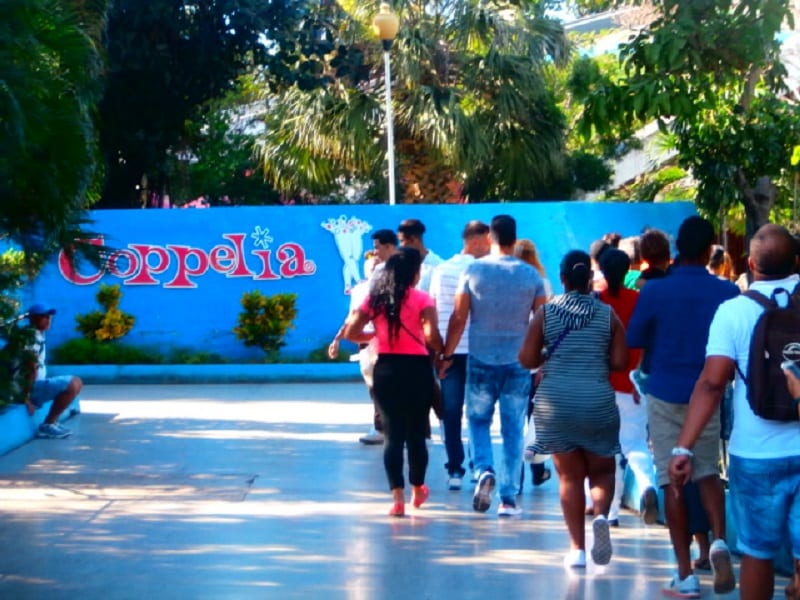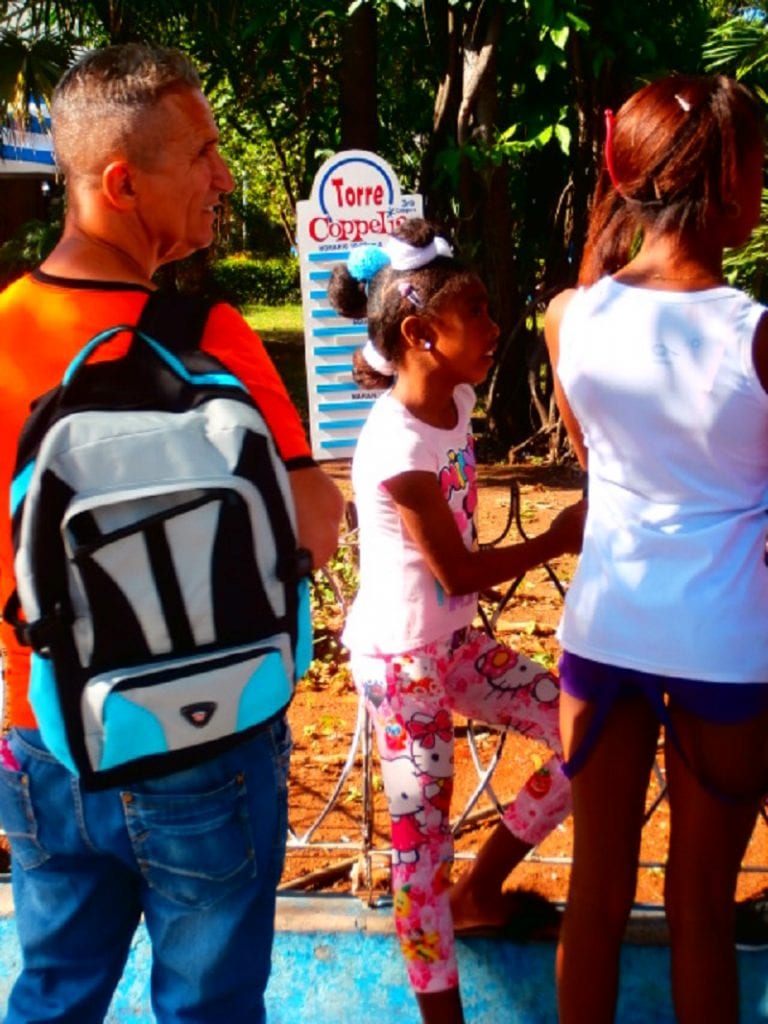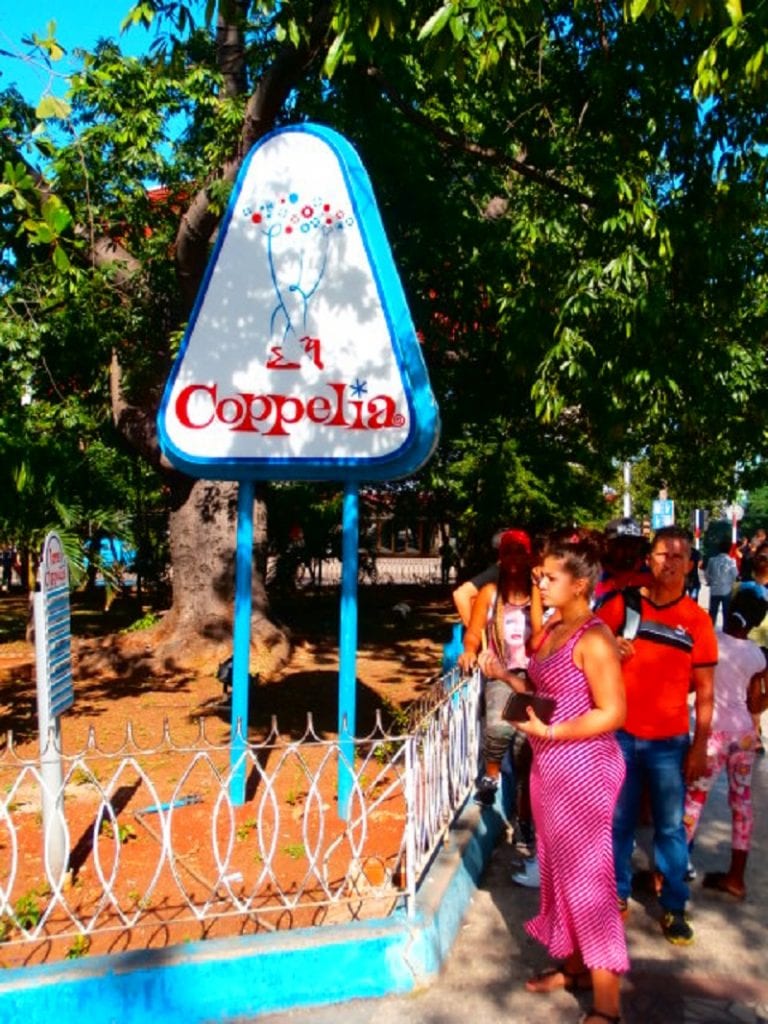“Filming” at Havana’s Famous Coppelia Ice Cream Parlor (1)
Ariel Glaria Enriquez
 HAVANA TIMES — Walking through Vedado recently on a cool day in Havana and having forgotten some things, I decided to go and have and an ice cream at Coppelia.
HAVANA TIMES — Walking through Vedado recently on a cool day in Havana and having forgotten some things, I decided to go and have and an ice cream at Coppelia.
My first surprise when I arrived was that there weren’t any tiresome lines on the pavement of 23rd avenue or L street. The next surprise was to read that there was a significant variety of flavors up on the notice board: strawberry, guava, vanilla and banana.
Sceptical, I walked along the wide entrance, paved in granite and marked on both sides by the nice vegetation in its gardens, up until the first section of tables outdoors, where a small group of people were waiting. The same flavors appeared on the board there just like they had done outside. It was 2:30 on a clear afternoon in November.
Not even five minutes had passed after I arrived when the security guard of that section ordered us all to go out and line up on the street. That is to say on the pavement of 23rd street.
We all went back. Nevertheless, we ended up half-way there (because obedience imposes its own and sometimes subtle limits where both parts are equal).
Standing there, opinions started flying around and I began to imagine all of what was going on as if it were a scene from a film in real time, where an eager camera to capture everything immediately shows, one by one, the anxious faces of those of us who only wanted to have an ice cream and leave.
 After showing each of our faces, the camera focusses on the first person to speak. It’s a 50-something year old man. He is holding a backpack and wearing a hat.
After showing each of our faces, the camera focusses on the first person to speak. It’s a 50-something year old man. He is holding a backpack and wearing a hat.
“At least there are good flavors and there aren’t many people,” he said, and he added something that was even more obvious, that managed to capture the rest of our attention:”Coppelia is no longer the same.”
“Coppelia will never be what it was,” a woman replies who is carrying a child.
I, who am also in this film, add something just as obvious like the rest:
“The thing that’s really changed, after the ice cream of course, is that you can no longer walk about inside, not even like you could always do to take a shortcut.”
“The good ice cream is sold there,” a woman who is behind me says pointing to the counter that sells in hard currency.
“To think they exchanged the recipe of Coppelia ice cream for the freedom of a political prisoner,” the 50-year old man said.
“Now this guy is free and we no longer have Coppelia ice cream,” the woman holding the child laughing.
The camera shows the face of the woman and the child in the same shot and then it goes back to the 50-year-old man who can’t keep quiet.
“What are you saying? That guy mustn’t even exist anymore,” he said.
The woman behind me tells me almost in a whisper.
“There is quite a bit of talent here and many chemical engineers who could invent a better ice cream than this one,” she says.
The camera focusses on her when she has already finished speaking and turns to me and I say:
“Then, why don’t they?”
But she isn’t listening or at least she pretends that she hasn’t heard me.
At that moment, with an arm gesture that reminds of me someone throwing a grenade from a trench in a war film, the guard tells us that we can come in and sit down.
 As if we had all heard the grenade go off, we all scurry in quickly. The camera gets lost in the confusion. A bit of sky, the granite floor and some bushes appear on screen.
As if we had all heard the grenade go off, we all scurry in quickly. The camera gets lost in the confusion. A bit of sky, the granite floor and some bushes appear on screen.
I share a table with the 50-year-old man and a couple with a pretty little girl. The camera moves around our table giving priority to the expectation on the girl’s face.
A waitress comes towards us. The camera goes in slow motion starting with her feet and stops with her hands, in which she has a small notebook and a blunt pencil.
“I only have banana ice cream,” she announces without beating around the bush and without looking at us.
The couple complain that outside it said strawberry, guava and vanilla and that that’s what they want.
“I only have banana ice cream left,” the waitress repeats.
“Is there any chance any more will come in?” I ask stuck in my film.
“Later,”she replies.
“Later, when?” I insist.
She makes a face and shrugs her shoulder as high as she can, which in fine Cuban means to say “And what do I know?” The camera zooms right into my face. I look at the time on my watch, then at the floor and I begin to shake my head.
The 50-year-old man with the baseball cap and backpack points another area out with his finger. I understand what he wants to say and I get up. He follows me. After discussing something among themselves, the couple decide to remain seated.
Out of precaution, I went to the person who I thought was responsible for the area. He is sitting down, indifferent, next to the magic board of flavors.
“Look,” I explain, “this man here and myself are going to a different area and if it’s the same as this one, we’ll come back.”
The camera takes a wide shot of the man who answers me by shaking his hand in the air. Which is also a Cuban way of saying “do whatever you want.”
The 50-year-old man with the backpack and hat and I stop behind a small group of people who are waiting to find empty benches in the covered part of what is today only physically Coppelia.
To be continued…





